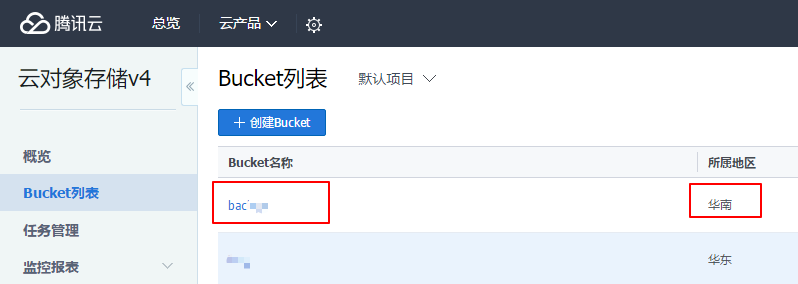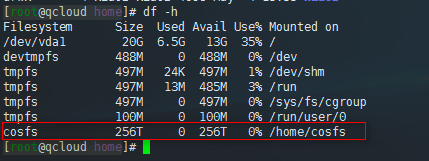Mounting COS to Tencent Cloud Server Using COS-Fuse Tool
Publish: 2017-05-05 | Modify: 2017-05-05
COS is an object storage service provided by Tencent Cloud. COS-Fuse allows you to mount COS to the local file system in Linux system, so that you can conveniently operate objects on COS through the local file system and achieve data sharing. The effect is the same as the article "Mounting Alibaba Cloud OSS to ECS with OSSFS on CentOS 6" shared before. This article uses CentOS 7 as an example.

一、Install Dependencies
Please run the following command to install the required dependencies:
sudo yum -y install automake gcc-c++ git libcurl-devel libxml2-devel fuse-devel make openssl-devel二、Compile and Install
# Download COS-Fuse
wget https://mc.qcloudimg.com/static/archive/144302cd3e6afb2bf2758a8c0c1d9bb9/cosfs-v4.2.1-master.zip
# Unzip
tar -zxvf cosfs-v4.2.1-master.zip
# Rename
mv cosfs-v4.2.1-master cosfs
# Compile and install
cd cosfs
./autogen.sh
./configure
make
sudo make install三、Configure and Run
In Tencent Cloud Console - Cloud Products - Storage and CDN - Object Storage Service, create a bucket and record the bucket name and region. They will be used later.

In Object Storage Service - Key Management, record your APPID, SecretId, and SecretKey. Or you can directly visit Key Management (login required) to view the keys.

Use the following command to save the bucket, SecretId, and SecretKey to the /etc/passwd-cosfs file:
echo my-bucket:my-access-key-id:my-access-key-secret > /etc/passwd-cosfs
chmod 640 /etc/passwd-cosfsMount COS
Use the following command to mount COS to the server. There are 4 parameters in the command, explained below.
# Create mount directory
mkdir -p /home/cosfs
# Mount
cosfs my-appid:my-bucket my-mount-point -ourl=my-cos-endpointmy-appid: Corresponds to APPID, please refer to Figure 3-2.my-bucket: The bucket name, as shown in Figure 3-1.my-mount-point: The directory to be mounted, such as/home/cosfs.-ourl: It is the endpoint of COS,http://cn-south.myqcloud.comcorresponds to South China Guangzhou region,cn-southcorresponds to North China Tianjin region,cn-eastcorresponds to East China Shanghai region. Please modify it according to the region where the bucket is located.
The following is the demonstration code:
echo my-bucket:faint:123 > /etc/passwd-cosfs
chmod 640 /etc/passwd-cosfs
mkdir -p /home/cosfs
cosfs appid:my-bucket mkdir -p /home/cosfs -ourl=http://cn-south.myqcloud.comTest
Use df -h to check if the mounting is successful. If it shows the following result, it means it is OK.

Summary
COS intranet traffic is free. Mounting COS for backup is a good solution. However, if you plan to store website programs or frequently read/write files, it may not be the best solution.
This article refers to the official documentation: COS-Fuse Tool
Comments

xiaoz
I come from China and I am a freelancer. I specialize in Linux operations, PHP, Golang, and front-end development. I have developed open-source projects such as Zdir, ImgURL, CCAA, and OneNav.
Random article
- Introducing a Convenient and Efficient Cross-border Remittance Tool - PandaRemit
- One-Click Installation Script for Nginx on CentOS
- CloudCone VPS Promotion, starting from $1.75/month, with reviews attached
- Add Floating Buttons to Your WordPress Blog Posts
- Baidu Netdisk Direct Download (Bypassing Large File Limit) Tips
- Add Username and Password Authentication to h5ai for Viewing
- Exploring the Starry Sky Network: NAS Users without Public IP Can Also Enjoy Smooth Network Connections
- Manual Installation of Redis 6.0 on CentOS 7
- Simple and Easy to Understand: Applying for a UK Postbox Address and Sharing the Forwarding Process for Free
- Installing BitTorrent Sync on CentOS to Build Your Own Sync Tool